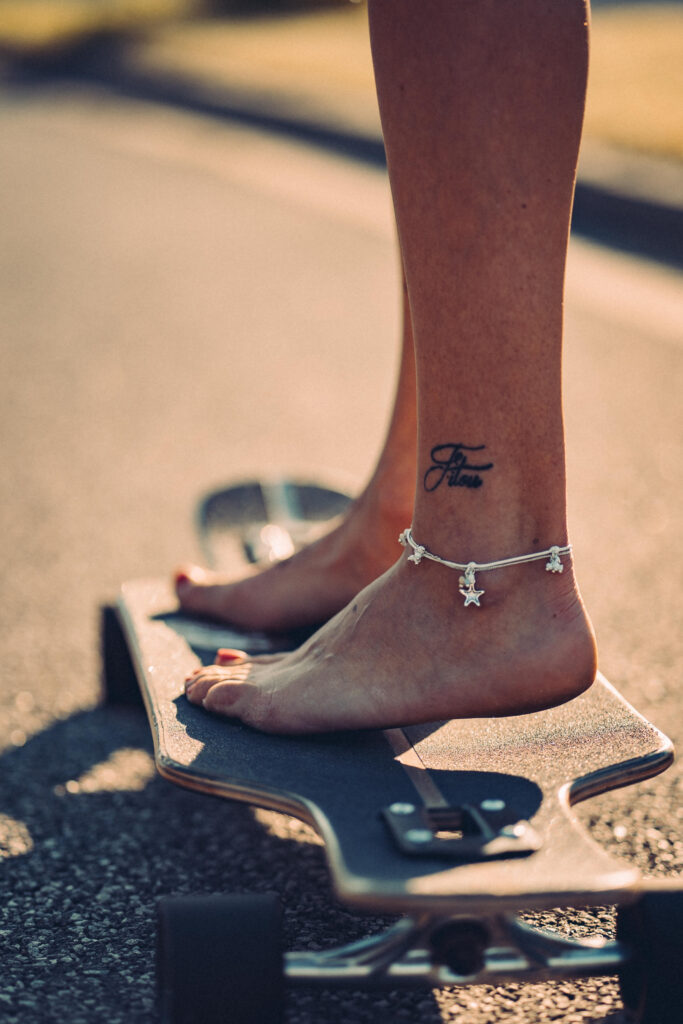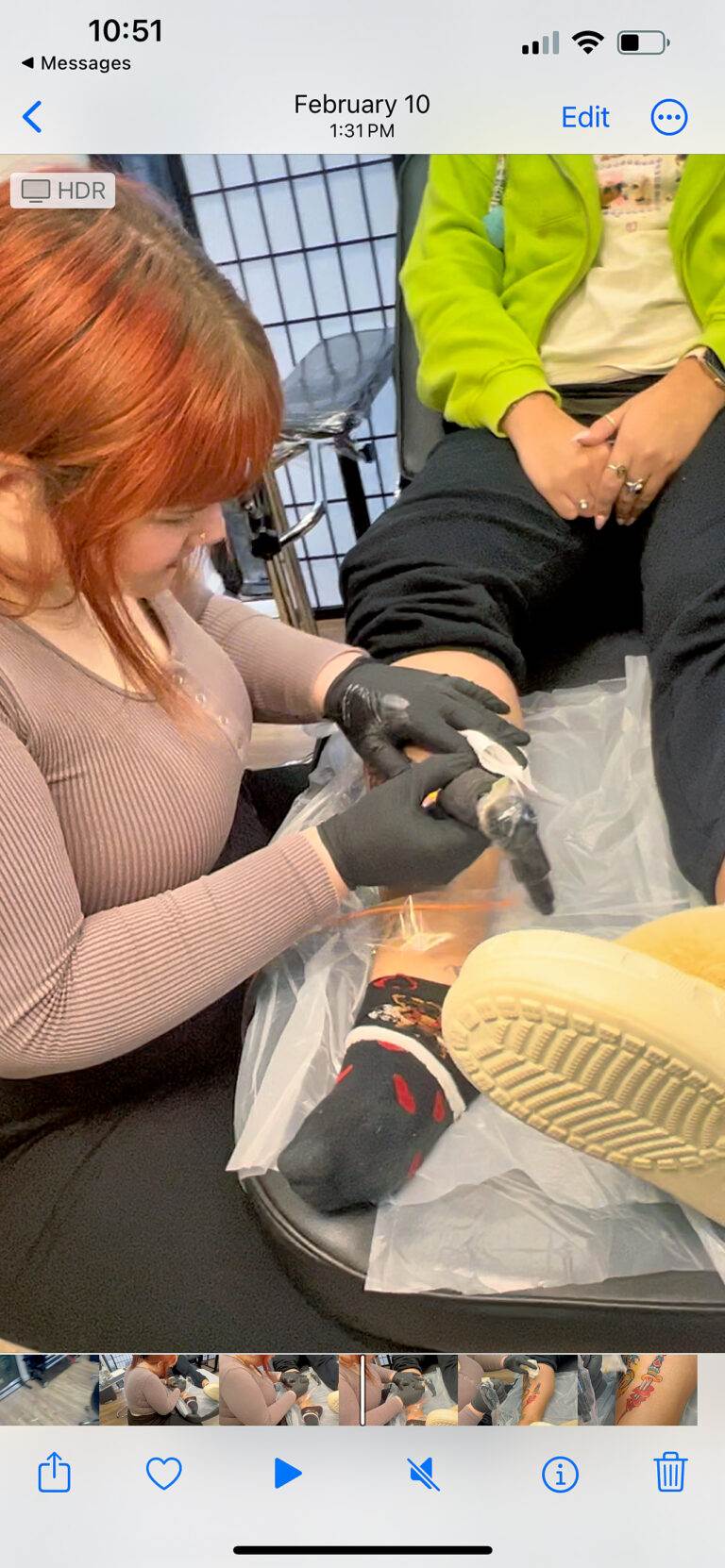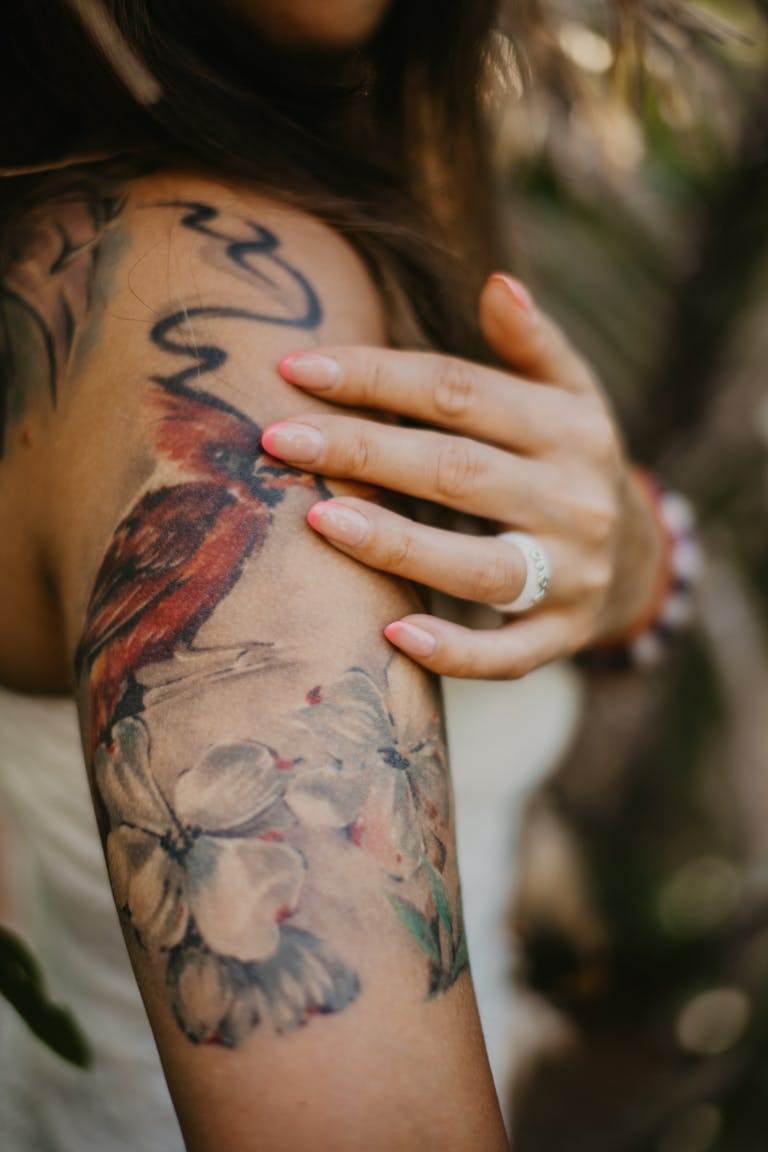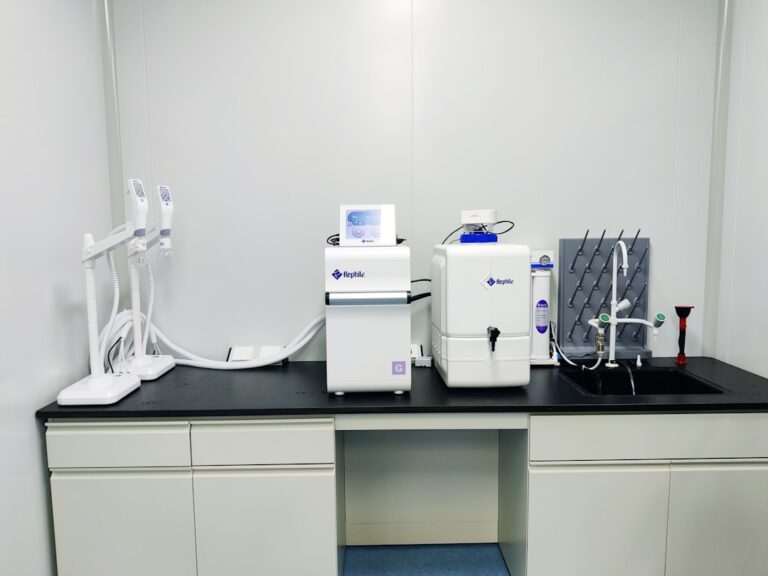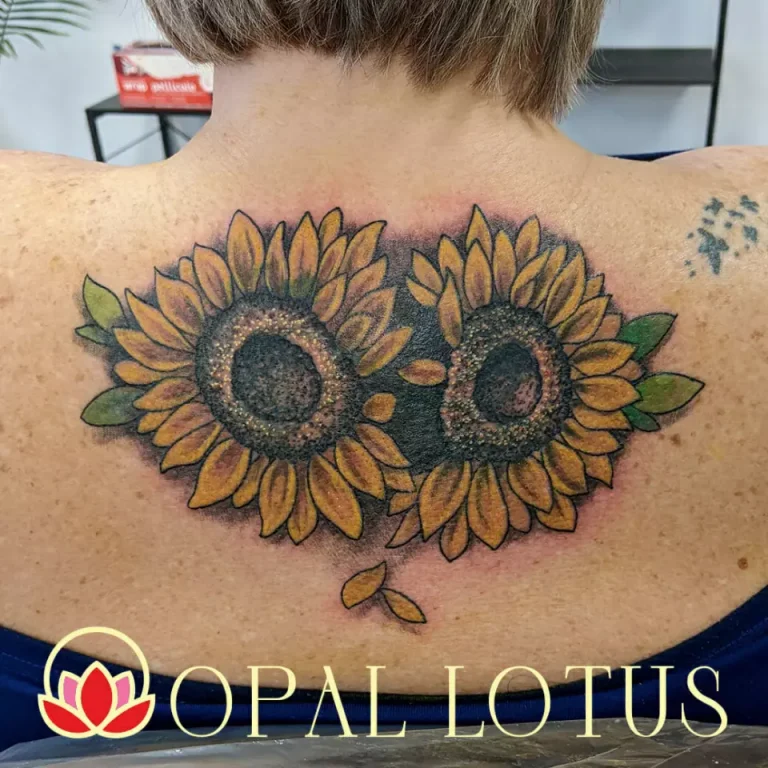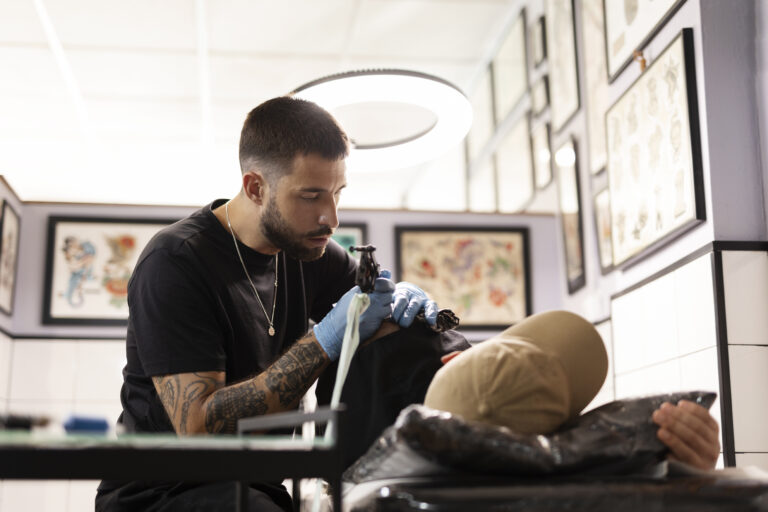The healing process for foot and ankle tattoos is unique due to the specific characteristics of the skin in these areas. The skin on the feet and ankles is generally thicker and has a different texture compared to other parts of the body, which can influence how a tattoo heals. Typically, the healing process can take anywhere from two to four weeks, but it may vary based on individual factors such as skin type, overall health, and adherence to aftercare instructions.
During the initial healing phase, it is common for the tattooed area to experience redness, swelling, and tenderness. These symptoms are part of the body’s natural response to the trauma inflicted by the tattoo needle. As the healing progresses, the tattoo will go through several stages.
Initially, the area may scab over as the skin begins to repair itself. It is crucial to avoid picking at these scabs, as doing so can lead to color loss or scarring. After about a week, the scabs will start to fall off, revealing a fresh layer of skin underneath.
At this point, the tattoo may appear dull or cloudy, which is normal. Over time, as the skin continues to heal, the colors will brighten and become more vibrant. Understanding this timeline can help individuals manage their expectations and care for their new tattoo effectively.
Key Takeaways
- Proper aftercare is crucial for the healing process of foot and ankle tattoos
- Swelling is a common side effect after getting a foot or ankle tattoo and can be managed with elevation and ice
- Caring for a foot or ankle tattoo involves keeping it clean, moisturized, and protected from sun exposure
- Potential risks of foot and ankle tattoos include infection, allergic reactions, and scarring
- Recommended aftercare products for foot and ankle tattoos include gentle cleansers, fragrance-free lotions, and non-stick bandages
Managing Swelling After Getting a Foot or Ankle Tattoo
Swelling is a common occurrence following a foot or ankle tattoo due to the sensitivity of these areas and their proximity to bones and joints. To manage swelling effectively, it is essential to keep the affected area elevated whenever possible. Elevating the foot can help reduce blood flow to the area, thereby minimizing swelling.
Additionally, applying a cold compress can provide immediate relief by constricting blood vessels and reducing inflammation. It is advisable to use a clean cloth or gauze soaked in cold water or ice wrapped in a towel to avoid direct contact with the skin. Hydration also plays a vital role in managing swelling.
Drinking plenty of water helps maintain overall fluid balance in the body, which can aid in reducing inflammation. Furthermore, avoiding excessive salt intake during the healing process can prevent additional swelling. If swelling persists or worsens despite these measures, it may be necessary to consult with a professional tattoo artist or healthcare provider for further advice.
Tips for Properly Caring for a Foot or Ankle Tattoo
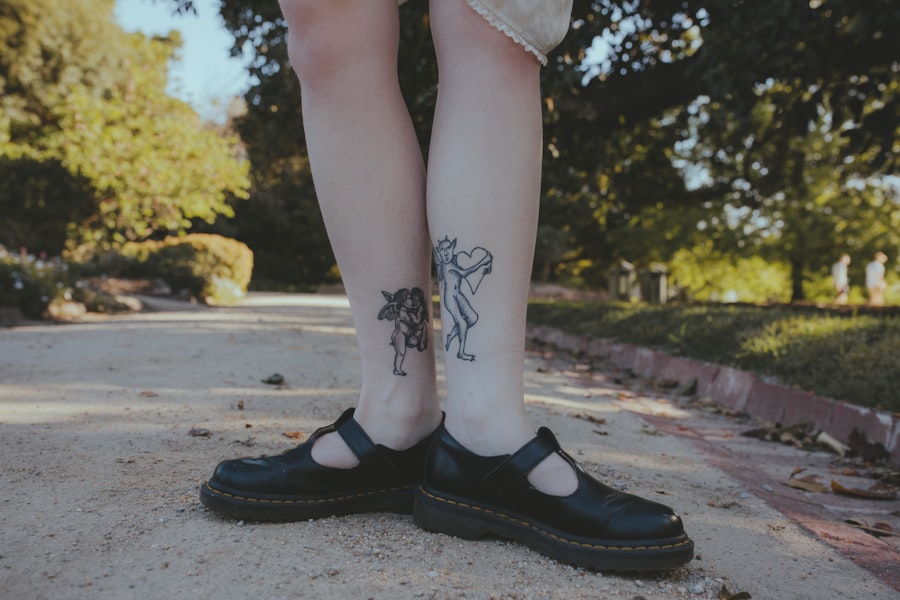
Proper aftercare is crucial for ensuring that a foot or ankle tattoo heals well and retains its vibrancy. One of the first steps in caring for a new tattoo is to keep it clean. Gently washing the area with mild soap and lukewarm water helps remove any excess ink or blood while preventing infection.
It is important to pat the area dry with a clean towel rather than rubbing it, as friction can irritate the skin and disrupt the healing process. Moisturizing is another essential aspect of tattoo care. Applying a thin layer of fragrance-free lotion or specialized tattoo aftercare ointment can help keep the skin hydrated and promote healing.
However, it is crucial not to over-moisturize, as this can lead to clogged pores and potential complications. Additionally, wearing loose-fitting shoes during the healing period can prevent unnecessary friction and irritation on the tattooed area, allowing for a more comfortable healing experience.
Potential Risks and Complications of Foot and Ankle Tattoos
While foot and ankle tattoos can be beautiful expressions of art, they do come with certain risks and potential complications. One of the most significant concerns is infection, which can occur if proper aftercare is not followed or if the tattooed area comes into contact with unclean surfaces. Signs of infection may include increased redness, swelling, warmth, or discharge from the tattoo site.
If any of these symptoms arise, it is essential to seek medical attention promptly. Another risk associated with foot and ankle tattoos is poor healing due to constant movement and pressure on these areas. The feet are subject to daily activities such as walking and standing, which can hinder the healing process and lead to complications like scarring or fading of the tattoo.
Additionally, individuals with certain medical conditions such as diabetes or circulatory issues may face increased risks when getting tattoos in these areas. It is crucial for anyone considering a foot or ankle tattoo to discuss their health history with their tattoo artist beforehand.
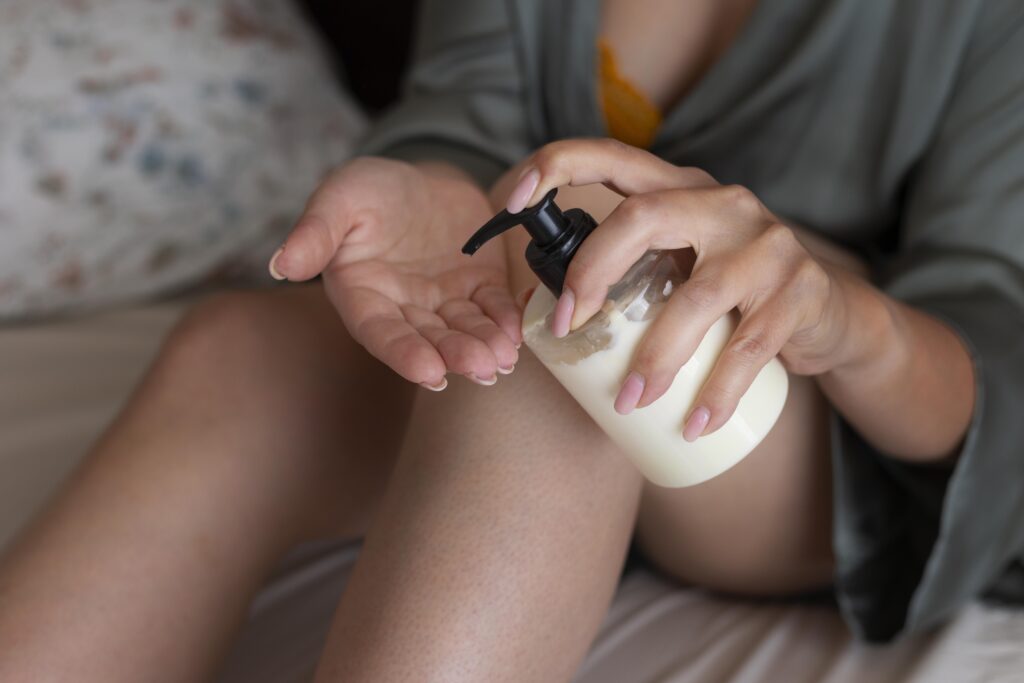

Recommended Aftercare Products for Foot and Ankle Tattoos
Choosing the right aftercare products can significantly impact the healing process of foot and ankle tattoos. A gentle, fragrance-free soap is essential for cleaning the tattooed area without causing irritation. Look for products specifically designed for sensitive skin to minimize any adverse reactions.
After cleansing, applying a specialized tattoo aftercare ointment can help lock in moisture and protect the skin from external irritants. In addition to ointments, using a non-comedogenic moisturizer can be beneficial during the healing process. These products are formulated to hydrate without clogging pores, which is particularly important for areas prone to sweating or friction like the feet and ankles.
It’s also advisable to have sterile bandages on hand for covering the tattoo during activities that may expose it to dirt or bacteria. By selecting appropriate aftercare products, individuals can promote optimal healing and maintain the integrity of their new tattoo.
How to Prevent Infection in Foot and Ankle Tattoos
Preventing infection is paramount when caring for foot and ankle tattoos due to their exposure to various environmental factors. One of the most effective ways to prevent infection is by keeping the tattooed area clean and dry. After washing the tattoo with mild soap, ensure that it is thoroughly dried before applying any ointments or moisturizers.
Avoid soaking the tattoo in water for extended periods, such as in baths or swimming pools, as this can introduce bacteria. Additionally, wearing breathable footwear during the healing process can help reduce moisture buildup around the tattooed area. Tight shoes can trap sweat and bacteria against the skin, increasing the risk of infection.
Opting for open-toed shoes or sandals allows for better air circulation while keeping pressure off the tattooed area. Regularly changing socks and ensuring that footwear is clean can further minimize exposure to harmful bacteria.

Seeking Professional Help for Foot and Ankle Tattoo Healing
If complications arise during the healing process of a foot or ankle tattoo, seeking professional help is crucial. Tattoo artists at Opal Lotus in Houston are well-versed in addressing common concerns related to tattoo healing. They can provide valuable insights into whether what you are experiencing is typical or if further action is needed.
If signs of infection or unusual symptoms occur, consulting with a healthcare provider may also be necessary. In some cases, individuals may require touch-ups after their tattoos have healed fully. This is especially true for foot and ankle tattoos that may have been affected by movement or pressure during healing.
Professional artists at Opal Lotus can assess any fading or imperfections and recommend appropriate solutions to restore the tattoo’s original beauty.
Long-Term Care and Maintenance of Foot and Ankle Tattoos
Long-term care for foot and ankle tattoos involves ongoing attention to ensure that they remain vibrant and well-maintained over time. One of the most effective ways to preserve a tattoo’s appearance is by protecting it from excessive sun exposure. UV rays can cause fading over time; therefore, applying sunscreen on exposed tattoos when outdoors is essential for maintaining color integrity.
Regular moisturizing also plays a significant role in long-term care. Keeping the skin hydrated helps prevent dryness and cracking, which can lead to fading or distortion of the tattoo design. Additionally, individuals should be mindful of any changes in their skin condition over time; if any unusual symptoms arise, consulting with a professional artist or dermatologist can help address potential issues before they escalate.
In conclusion, foot and ankle tattoos require careful consideration during both the healing process and long-term maintenance. By understanding how these tattoos heal, managing swelling effectively, practicing proper aftercare, recognizing potential risks, selecting appropriate products, preventing infection, seeking professional guidance when needed, and committing to long-term care practices, individuals can enjoy their tattoos for years to come while ensuring they remain beautiful expressions of art on their bodies.
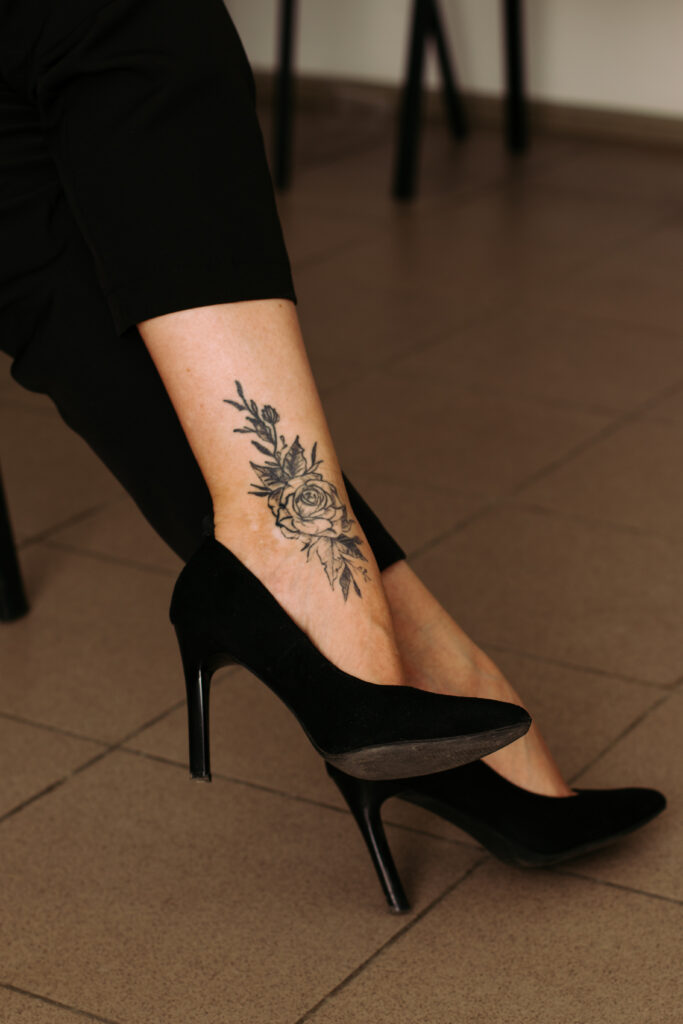
FAQs
What are the common causes of swelling after getting a foot or ankle tattoo?
Swelling after getting a foot or ankle tattoo is a common side effect and can be caused by the body’s natural inflammatory response to the tattooing process. Additionally, the location of the tattoo on a body part with a high concentration of nerve endings and blood vessels can contribute to swelling.
How long does swelling typically last after getting a foot or ankle tattoo?
Swelling after getting a foot or ankle tattoo can last for a few days to a week. However, individual healing times can vary based on factors such as the size and intricacy of the tattoo, as well as the individual’s overall health and immune response.
What are some tips for reducing swelling after getting a foot or ankle tattoo?
To reduce swelling after getting a foot or ankle tattoo, it is recommended to elevate the affected area, apply cold compresses, and avoid standing or walking for extended periods. Additionally, staying hydrated and avoiding salty foods can help reduce swelling.
What are some signs of infection to look out for after getting a foot or ankle tattoo?
Signs of infection after getting a foot or ankle tattoo can include increased redness, warmth, or tenderness around the tattooed area, as well as the presence of pus or discharge. If any of these symptoms occur, it is important to seek medical attention promptly.
How long does it take for a foot or ankle tattoo to fully heal?
A foot or ankle tattoo can take several weeks to fully heal. During this time, it is important to follow proper aftercare instructions provided by the tattoo artist, including keeping the tattoo clean and moisturized, and avoiding activities that could irritate the healing skin.
